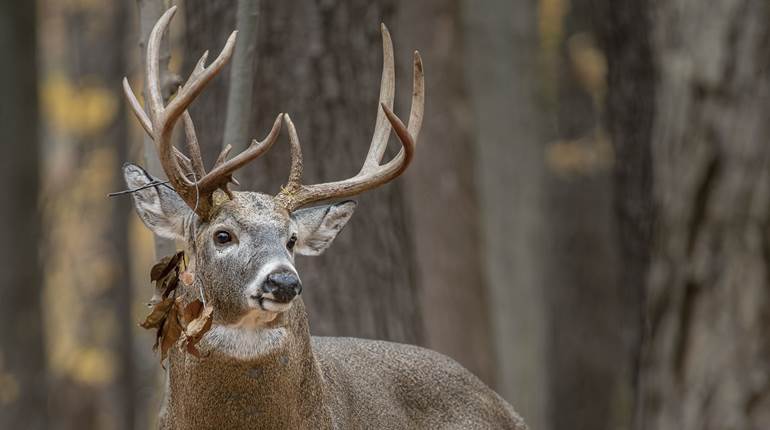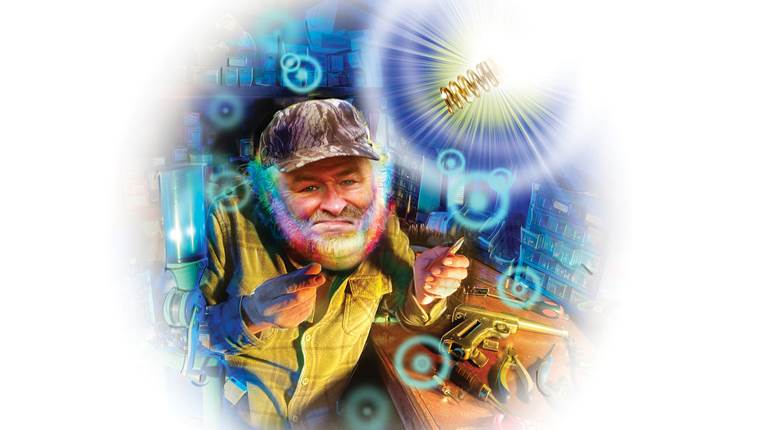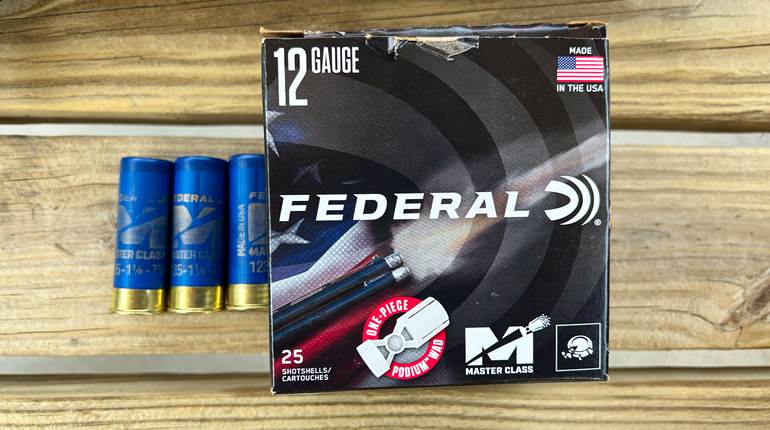
Why can’t we love the .35? That’s a question I just don’t understand.
By and large, we shooters seem to gravitate to the middle of the road; to bland, yet predictable, mediocrity. In rifle cartridges, we usually take the safe route and .30-caliber has emerged as the American shooter’s choice. The most popular cartridges for hunting and even target shooting begin and end with the thirties. Sure, we “experiment” a bit with other bore sizes, but in the end it always comes back to the .30 caliber. Moderate, safe, bland and predictable.
Sadly, my favorite bullet diameter, the .35 caliber, doesn’t even rate a blip on the American shooter’s radar screen. Yet, that bore diameter produces some of the best hunting cartridges available.
Of course, not all .35-caliber cartridges approach greatness. The quest for an acceptable .35 has inspired such impotent wastes as the .35 Winchester Self Loader, once labeled a candidate for the title: “World’s Most Useless Center-Fire Rifle Cartridge.”
Its spawn, the .351 Winchester Self Loader, fared a little better, but it was never in danger of greatness. It’s said that the French used it in World War I, but it probably didn’t see much action.
The .351 WSL did grab a bit of fame, first as a popular rifle for prison guards and then as one of the rifles used to punch a lot of holes in Bonnie and Clyde’s automobile (although that accolade is in question). I have one, of course, and it is fun to shoot, but I would never use it on a serious big-game hunt.
There have been many others, such as the .35-30 Maynard (both in the 1865 and the 1882 versions) and .35-40 Maynard. I’ll bet it’s been awhile since those cartridges have been seen in a hunting camp. The .35 Win., .35 Newton and .350 Griffin & Howe Mag. all were more powerful-and may have been excellent hunting cartridges-but they are gone; rejected by the shooting public and banished to the junk heap of obsolescence. The sad truth is that the active list of current .35-caliber rifles and cartridges is tragically short.
.35 Remington
This stumpy little cartridge was introduced to the hunting public in 1908 and is the only surviving member of the early class of Remington rimless cartridges. It arrived with three other cartridges designed to compete with Winchester’s popular lever-action lineup. The .25 Rem., .30 Rem. and .32 Rem. were to go head to head with the .25-35 Win., .30-30 Win. and the .32 Win. Spl.
Why the .35 Rem. was included in that party is a mystery, as it had no Winchester counterpart. Perhaps that’s why it has survived. You can never lead if you always follow; the other cartridges were designed to chase Winchester’s success, while the .35 Rem. plowed fresh ground. The .35 Rem. was also the only cartridge of that original Remington family that was based on a different parent case.
The .35 Rem. was initially chambered in Remington’s Model 8 autoloader, soon followed by the Model 14 pump-action. In the years since, the .35 Rem. has been offered in just about every rifle action type ever conceived and a few handguns. Sadly, I can’t find a single major gunmaker chambering this cartridge today.
The .35 Rem. pushes a 200-grain bullet to just more than 2000 f.p.s. and is probably a better deer and black bear cartridge at “woods ranges” than the more popular .30-30 Win. Most ammunition makers have a 200-grain load, and Remington also has a 150-grain load with a muzzle velocity of 2300 f.p.s. Hornady’s LEVERevolution pushes the performance up a notch with a 200-grain pointed bullet at 2225 f.p.s.
On those gray, moody November days when I am feeling blue I take my Remington Model 141 pump-action rifle in .35 Rem. into the deer woods, and I pine for what could have been.
.356 Winchester
If the .35 Rem. is on the threatened list, this one is on a path to extinction. Back in 1983 Winchester introduced the .356 Win. as a way to boost the power of the Model 94 lever-action rifle. The .356 Win. offered the performance level of the .358 Win. in a rimmed cartridge that would work in a lever-action rifle. Everybody agrees that the .358 Win. is a wonderful cartridge, but nobody buys them. It was predictable that the .356 Win. would follow that tradition.
I have a .356 Win. in the Big Bore Model 94. It is very accurate, easy to carry and fast on the target. With a 200-grain bullet at 2460 f.p.s., it is a heavy-hitter on whitetails. Every time I use it I ask myself, “What’s not to like?” Beats me, but nobody liked it enough to keep it in production. Winchester still offers ammunition, but the guns are history.
.358 Winchester
Loved by gun guys and rejected by the huddled masses, this is perhaps the most underappreciated cartridge of them all. The .358 Win. was introduced in 1955. The .358 Win. was simply a .308 Win. necked up to .35 caliber. It is capable of driving a
200-grain bullet to almost 2500 f.p.s. and is a good cartridge for hunting the thick woods for deer, hogs, black bear or even elk.
It was introduced in the bolt-action Model 70 in which it was trustworthy, but boring. But when Winchester chambered the .358 the following year in its unique lever-action, the Model 88, it became a really interesting cartridge.
For a while Savage chambered it in the Model 99, and I am still looking for one I can afford. Right now, I think that the Browning BLR lever-action rifle is the only production gun left on the market in .358 Win.
Winchester and Hornady both offer 200-grain loads at 2475 f.p.s. From the “Green Goblin” (a bolt-action rifle I built on a Remington action), both will produce groups that are sub-minute-of-angle.
.350 Remington Magnum
A failed product is often said to be “ahead of its time,” which is usually just a polite way of saying nobody wanted to buy it. The Remington Model 600 Magnum rifle, along with the cartridge it birthed, was just such a product. As many hunters know, the Remington Model 600 carbine, which was introduced in 1964, was one of the first short, light, bolt-action rifles to find success with deer hunters. When chambered for cartridges such as the .243 Win., 6 mm Rem., .308 Win. and .35 Rem., it was an excellent woods rifle for hunting whitetails. In 1965 Remington took it to the next level with the introduction of the Model 600 Magnum Carbine. This new model featured two new cartridges, the .350 Rem. Mag. and the 6.5 mm Rem. Mag. They truly were ahead of their time, as they were short magnums back when being a short magnum wasn’t cool. The trouble is, they didn’t sell.
The 600 Magnum suffered from a barrel that was too short at 18½ inches. In 1968 the 600 Magnum was replaced by the Model 660 Magnum, which featured a 20-inch barrel, but it was never a big seller, and Remington dropped the rifles.
The ammunition hung on a while longer, but eventually Big Green abandoned her babies and stopped making both cartridges. But in 2003 Remington decided to attempt a resurrection. The .350 Rem. Mag. is still not burning up the sales records, so maybe ahead of its time is the wrong description. It’s a decent cartridge, but American hunters just won’t flock to it.
The Remington Model 673 Guide Rifle was chambered in .350 Rem. Mag. The barrel is a full 22 inches, like it always should have been, but the foolish design with the huge “shark fin” front sight turned hunters off, and it was dropped.
Remington currently lists a Model 7 rifle with a 20-inch barrel; today’s version of the 600 in .350 Rem. Mag., and I think that’s the only current production rifle in that cartridge. I have one, and I like it a lot. It shoots well and is light and easy to carry while hunting. I have shot a few critters, including a tough South Texas Nilgai, and have been happy with the performance. Ruger made a few bolt-actions some years back, and Remington made rifles in the 700 Classic line, but they are long gone.
Remington loads a 200-grain PSP Core-Lokt bullet at a muzzle velocity of 2775 f.p.s. Nosler offers the .350 Rem. Mag. in its NoslerCustom line with a 225-grain Partition bullet at 2550 f.p.s. And Barnes makes a 200-grain TSX bullet designed for this cartridge that, when handloaded to 2850 f.p.s., allows the .350 Rem. Mag. to achieve its potential.
.35 Whelen
The origins of the .35 Whelen are controversial even today. The long accepted story was that James V. Howe developed the cartridge in 1922 and named it in honor of his friend, gunwriter Col. Townsend Whelen. That version is in some dispute, with evidence that Whelen himself developed the cartridge or at least worked with Howe on its development. All we do know for sure is that it was either Howe or Whelen, or both, who necked the .30-’06 Sprg. up to 0.358 inches and dubbed it “the poor man’s magnum.”
In 1987 Remington made an honest cartridge out of the .35 Whelen. The company has chambered several rifles in the cartridge including models in bolt-action, pump-action and semi-automatic. Ruger briefly chambered the M77 rifle in .35 Whelen. Also H&R 1871, Inc., offered single-shot rifles in .35 Whelen from 1994 to 1996. They have almost all abandoned the cartridge. The only rifles I can find in production are from Nosler, Remington and CVA.
The ammunition situation is a little better than the rifles. Remington continues to offer factory ammo, and its 200-grain factory load has a muzzle velocity of 2675 f.p.s., while the 250-grain load’s muzzle velocity is 2400 f.p.s. Federal loads the 225-grain Trophy Bonded Bear Claw bullet with a muzzle velocity of 2600 f.p.s. Fusion Ammo has a 200-grain with a muzzle velocity of 2800 f.p.s. Hornady has a Superformance load with a 200-grain SP at 2910 f.p.s. Barnes has a Vor-TX load with a 180-grain TSX bullet and a muzzle velocity of 2900 f.p.s. Nosler has three loads in its Custom line. They include both the AccuBond and the Partition 225-grain bullets with a muzzle velocity of 2800 f.p.s. and a 250-grain Partition load with a muzzle velocity of 2550 f.p.s.
If you match the bullet to the game, this is one of the all-time great hunting cartridges. I have used the .35 Whelen on critters from bobcats to moose. Included in that have been a whole bunch of deer, hogs and a bear or two. It has never failed me. I believe it never will.
I own several rifles in this cartridge and all my .35 Whelen rifles are accurate. With the best loads, my Remington Model 700 is one-hole accurate. With a 200-grain bullet the .35 Whelen actually shoots a bit flatter than the .30-’06 Sprg. with a similar 180-grain bullet. The .35 Whelen is accurate, hits hard, penetrates deep, shoots flat and recoils mildly. Why the public abandoned it so quickly is a mystery to me.
.358 Norma Magnum
The .358 Norma Mag. was designed for the American market, but sadly no American riflemaker ever chambered the cartridge in a cataloged gun. It’s often thought that if they had it would have gained popularity over the .338 Win. Mag.They have almost identical case capacity, but the .358 Norma Mag. can drive the same weight bullet a bit faster. One can almost hear the echoes of Norma Mag. crying, “My kingdom for a rifle.”
The .358 Norma Mag. factory load is a 250-grain Oryx bullet listed with a muzzle velocity of 2723 f.p.s. That load actually produced 2825 f.p.s. from my E.R. Shaw rifle’s 24-inch barrel. Norma offers factory ammunition, E.R. Shaw will make a rifle, as will any other custom, or semi-custom, riflemaker.
If we compare the .300 Win. Mag. loaded with a 180-grain Oryx bullet to the .358 Norma Mag. with a 250-grain Oryx bullet-both with a 200-yd. zero-we see that contrary to popular belief, a 35-caliber can be a long-range cartridge. At 300 yds., the .358 Norma impacts only 0.96" lower than the .300 Win. At 400 yds., the .358 Norma impacts 3.1 inches lower than the .300 Win. Mag. The .358 has 24 percent more energy at the muzzle than the .300 Win. Mag. At 300 yards, it has 19 percent more energy than the .300 Win. Mag.-all with a bigger, heavier bullet that will punch a bigger hole and penetrate deeper. I have used this cartridge on moose with excellent results. I would also expect it to handle anything in North America from deer to the big bears.
While the American mainstream won’t accept the .35, they are not unloved. Gun guys recognize the potential in the .358. Perhaps that’s how it should be, the masses rarely embrace true greatness. No matter if it’s books, art or hunting cartridges, it’s only those with a deep understanding of the subject who can fully understand the greatness often buried in obscurity.





































